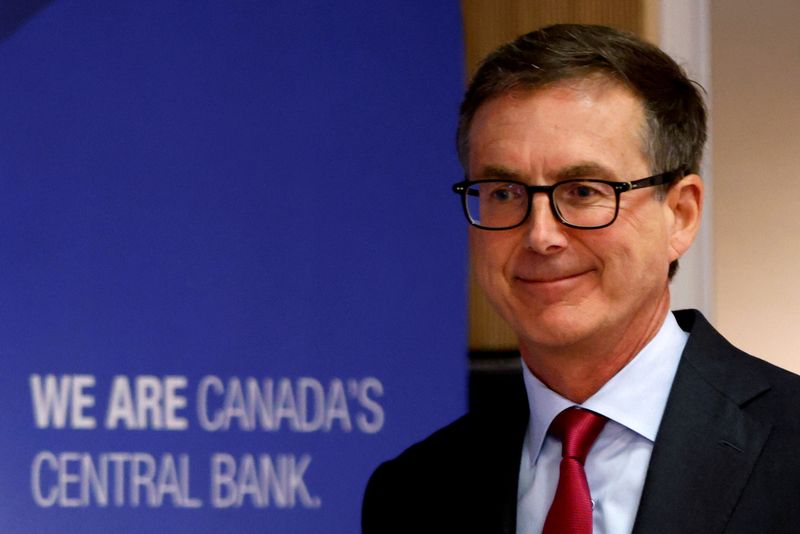Bank of Canada: rising C$ could hit export outlook, affect monetary policy
© Reuters. FILE PHOTO: Bank of Canada Governor Tiff Macklem arrives to a news conference in Ottawa, Ontario, Canada September 10, 2020. REUTERS/Blair Gable/File Photo/File Photo By Julie Gordon and David Ljunggren
OTTAWA (Reuters) -If the buoyant Canadian dollar continues to rise it could create headwinds for exports and business investment as well as affecting monetary policy, Bank of Canada Governor Tiff Macklem said on Thursday.
The currency has jumped about 4% since the central bank updated its projections in April, driven by surging commodity prices. Canada is a major exporter of energy, lumber, minerals and agricultural products. It hit a six-year high on Wednesday.
“We’ve highlighted that a stronger dollar does create some risk,” Macklem told reporters after a speech to university students in his most detailed comments yet about the potential drawbacks of a more muscular currency.
“If it moves a lot further, that could have a material impact on our outlook and it is something we have to take into account in our setting of monetary policy.”
Further gains could drag down export projections. “If we’re less competitive, our export profile is weaker, that also probably means that our investment profile will be weaker,” he said.
The Canadian dollar was trading 0.4% lower at 1.2180 to the greenback, or 82.10 U.S. cents, pressured by a sharp decline in oil prices.
Macklem earlier said that some of the monetary policy tools the bank is using to address the COVID-19 pandemic, such as quantitative easing (QE), could widen wealth inequality and that it was looking closely at the issue.
While the QE program has stimulated demand and helped create jobs, it was is boosting wealth by inflating the value of assets that “aren’t distributed evenly across society”, he said.
The bank had been buying C$4 billion ($3.3 billion) of government bonds a week but last month cut that to C$3 billion, becoming the first major central bank to trim a pandemic-era money-printing stimulus program.
It also signaled it could start lifting interest rates in late 2022, as it hiked the outlook for the Canadian economy.
Macklem reiterated Thursday that the benchmark rate would stay at its current record low 0.25% until inflation was sustainably at the 2% target. The bank, he added, would continue to use monetary policy tools to support a “complete recovery.”












 Bitcoin
Bitcoin  Ethereum
Ethereum  Tether
Tether  XRP
XRP  USDC
USDC  TRON
TRON  Lido Staked Ether
Lido Staked Ether  Dogecoin
Dogecoin  Figure Heloc
Figure Heloc